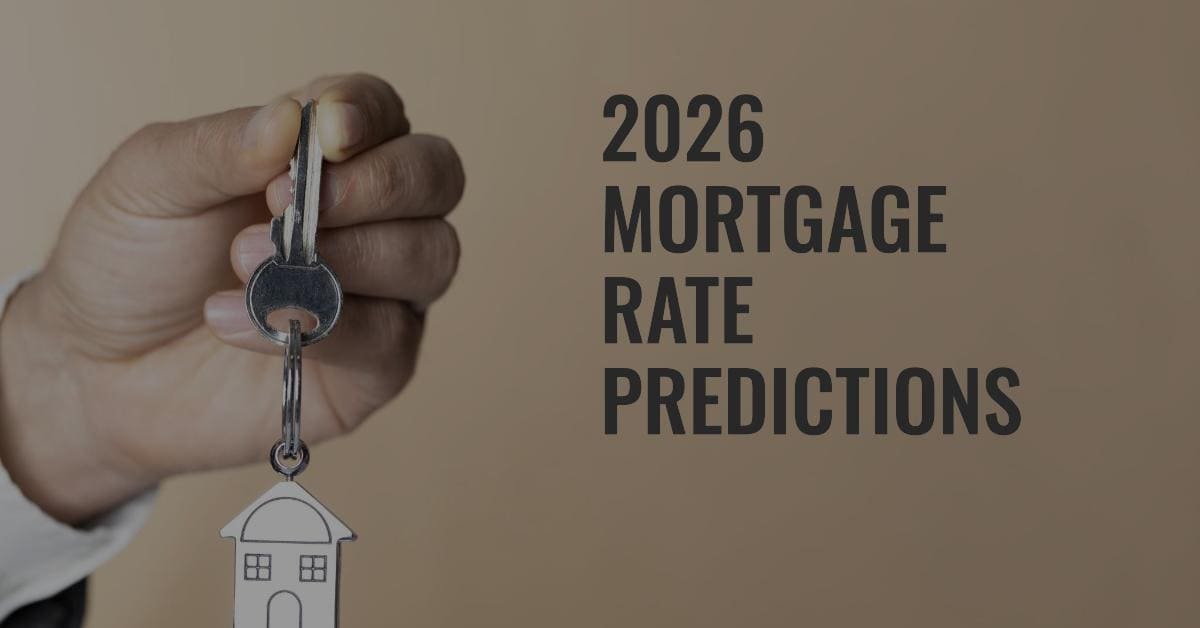Will mortgage rates go down in 2026? It's a question that weighs heavily on the minds of homeowners, potential buyers, and real estate investors. Predicting the future of these rates is notoriously difficult, but by examining current economic trends and expert forecasts, we can make some educated guesses.
Will Mortgage Rates Go Down in 2026?
Several reports paint an intriguing picture. Long Forecast presents a scenario where mortgage rates embark on a downward trend starting in 2025, with a significant dip in January 2026. Their prediction suggests rates could plummet to 4.87%, a welcome relief for those facing the current market climate. This aligns with the broader expectation of rates softening after a period of hikes, as the post-pandemic recovery unfolds and global economic pressures begin to ease.
Morningstar's analysis echoes this sentiment, predicting a decrease in the 30-year fixed mortgage rate to 5.0% in 2025, down from the current average of 6.8% in 2023. Their forecast hinges on the anticipated actions of the Federal Reserve as they work to combat inflation and steer the economy towards stability.
However, before we celebrate prematurely, it's crucial to acknowledge the inherent complexities involved. Unlike flipping a coin, economic forecasting isn't a game of chance, but rather a meticulous dance with various economic indicators. Inflation, the Federal Reserve's policies, and global economic conditions all intricately intertwine to influence mortgage rates.
While Long Forecast's prediction of a potential drop to 4.87% by January 2026 is certainly enticing, it's wise to remember that economic forecasting is not an exact science. The landscape can shift rapidly due to unforeseen events, like policy changes, geopolitical tensions, or unexpected market movements.
Consider the recent economic climate. The lingering effects of COVID-19, ongoing geopolitical tensions, and disruptions in global supply chains have all left their mark. These factors could continue to exert unpredictable influences on mortgage rates.
Furthermore, the Federal Reserve's actions to curb inflation through interest rate adjustments will undoubtedly have a direct impact. If inflation proves to be a persistent foe, the Fed might be forced to keep rates elevated for a longer period to ensure price stability. Conversely, if they manage to bring inflation under control, they might lower rates to stimulate economic growth.
Adding to the chorus of potential decline is Statista's forecast, which suggests a 1.6% drop in the 30-year fixed rate by 2026. Their prediction rests on the assumption that the 10-year treasury constant maturity rate will also decline, which has historically correlated with movements in mortgage rates.
The crucial takeaway here is that these predictions are just that – predictions. They are susceptible to change based on unforeseen economic developments, policy shifts, and unforeseen global events. Mortgage rates are influenced by a complex interplay of factors, including inflation trends, the Federal Reserve's actions, and global economic conditions.
So, what does this mean for you, the homeowner, the potential buyer, or the investor? If you're basing financial decisions on mortgage rate predictions, proceed with caution. Stay informed by diligently following the latest economic data and analyses. Consider consulting with a financial expert who can help you navigate the uncertainties of the mortgage market.
How to Prepare for Mortgage Rates in 2026?
While economic forecasts offer a glimpse into potential scenarios, it's important to remember that they are not a crystal ball. The reality is that the path of mortgage rates in 2026 remains uncertain. So, what can you do as an individual navigating this complex sector?
Embrace Flexibility: Locking yourself into a rigid financial plan based solely on a single prediction can be risky. Instead, consider adopting a flexible approach that allows you to adapt to changing circumstances. This might involve exploring alternative financing options, such as adjustable-rate mortgages (ARMs), or being prepared to adjust your down payment or closing cost contributions depending on the market conditions.
Prioritize Financial Strength: Regardless of the mortgage rate environment in 2026, focusing on building a strong financial foundation is paramount. Aim to pay down existing debt, establish a healthy emergency fund, and maintain a good credit score. These steps will strengthen your financial profile and make you a more attractive borrower in the eyes of lenders, potentially giving you access to better rates and loan terms.
Seek Expert Guidance: A qualified mortgage professional can be an invaluable asset in this dynamic market. They can help you decipher complex financial data, understand different loan options, and guide you through the pre-approval process. Their expertise can be especially helpful in navigating a scenario where mortgage rates might be fluctuating.
Focus on Long-Term Value: When making real estate decisions, prioritize long-term value over short-term gains. Consider factors like the property's location, its overall condition, and its potential for appreciation. While a lower mortgage rate in 2026 might be appealing, don't let it overshadow the importance of choosing a property that aligns with your long-term goals and financial well-being.
Remember, the Journey, Not Just the Destination: The path to homeownership or real estate investment is a journey, not a one-time event. By staying informed, adopting a flexible approach, and focusing on building a strong financial foundation, you can position yourself to make sound decisions and navigate the uncertainties of the mortgage market, regardless of what 2026 holds. After all, in the ever-changing world of real estate, knowledge, adaptability, and a well-crafted strategy are far more valuable than any single prediction.


